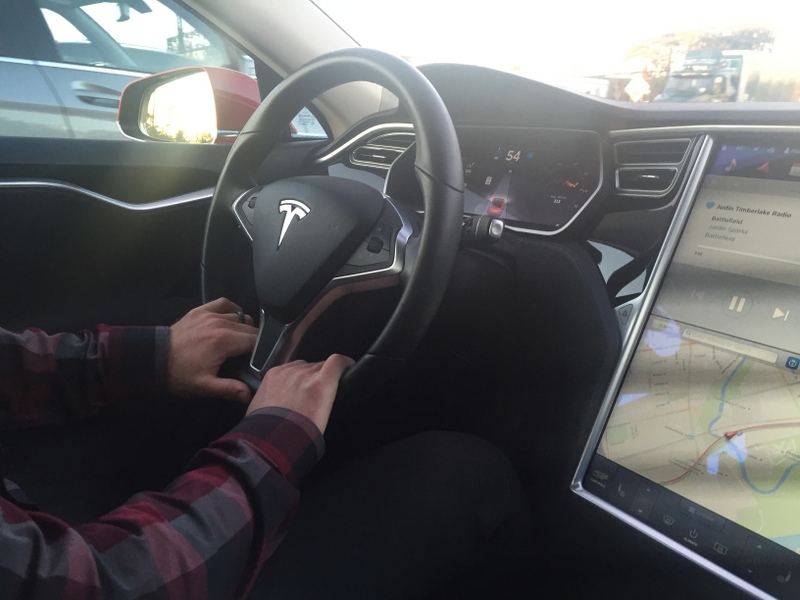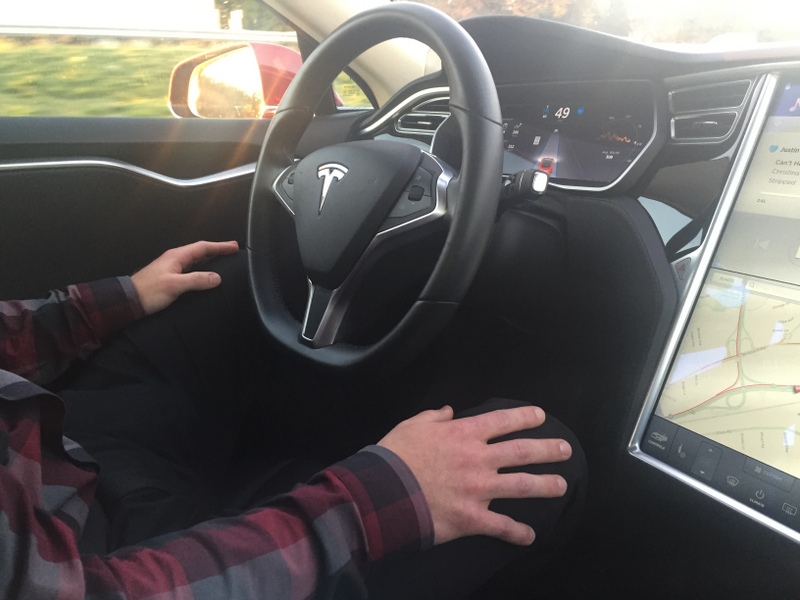Lifestyle
Where to place your hands when Tesla Autopilot is engaged
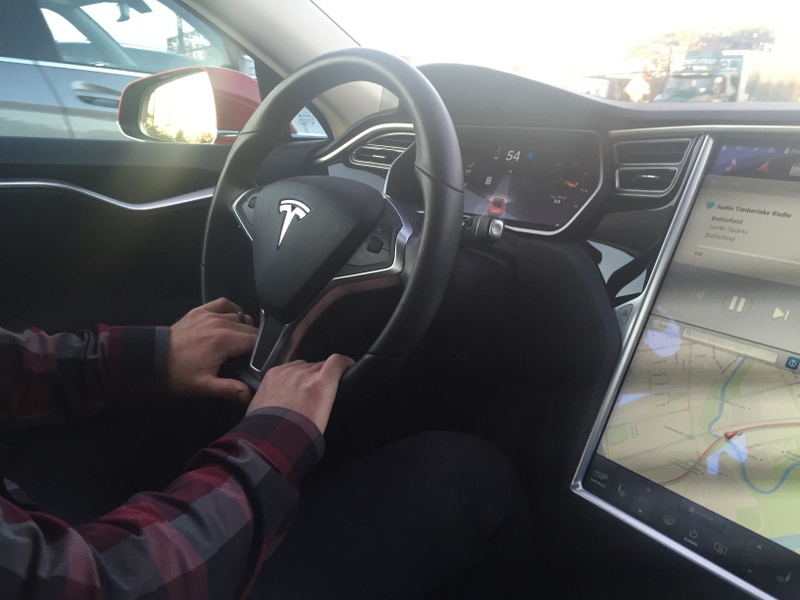
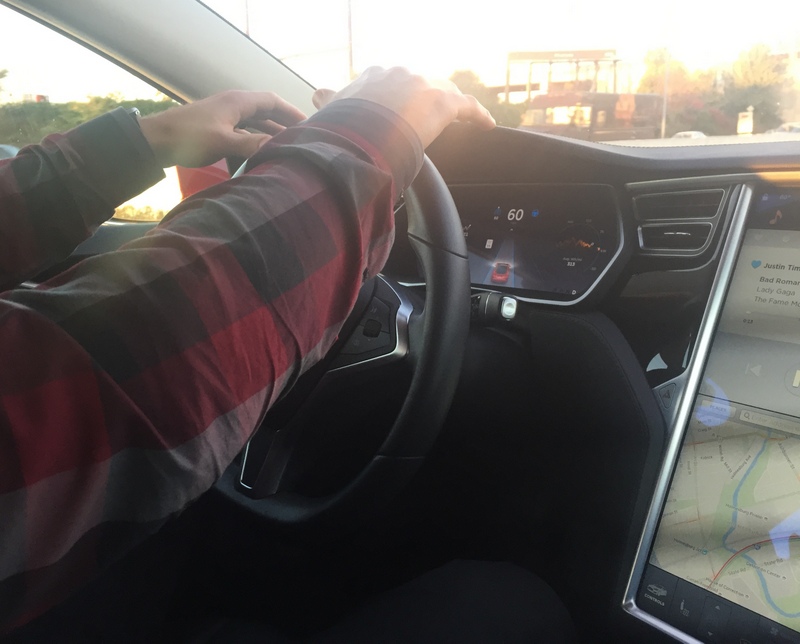
A sure way to get other car occupants to do a double take, but it gets exceptionally tiring in a matter of seconds.
By now, we’ve seen plenty of videos and pictures of Autopilot-enabled Teslas cruising around. In some cases, drivers are experiencing the shock and awe of trying it for the first time while trying to pretend to play it cool. In others, drivers are not afraid to admit they are more than just a little freaked out.
Now that the initial Autopilot reactions are well documented, let’s discuss using it in real world situations.
When to use it – TACC
The Traffic Aware Cruise Control (“TACC”) portion of the software has been live for several months on cars that have the requisite hardware. It is appropriate for use in any situation you would normally use cruise control, but with the added benefit of automatically increasing or decreasing speed based on the car in front of you. You are able to set a space tolerance relative to the car in front of you as well as your maximum speed.
When to use it – Autosteer
Arguably the most anticipated part of the new Autopilot suite of driver’s assistance features is Autosteer. This feature uses ultrasonic sensors, radar and a front-facing camera together to track and follow lane markings and other vehicles. It is appropriate for use on divided highways with clear lane markings. Let me say it again: divided highways. This means a barrier between you and oncoming traffic, no pedestrians and no parked cars.
When to use it – Auto Lane Change
While using the Autosteer feature in an appropriate setting, Model S will also change lanes for you. Simply check your surroundings, see if there is an opportunity to change lanes and activate the turn signal on the side of the lane you wish to enter. The car will also look out for obstructions and change lanes when safe. As always, keep a close watch and enjoy the assistance. One situation where TACC and Autosteer really shine is stop-and-go highway traffic. I’ve had an especially flawless experience when traffic was moving between 20-35 mph during rush hour. Lane changes, however, are not good candidates for this type of traffic volume. In my attempts, the car was wholly uninterested in changing lanes even when there was an amount of space that any regular city driver would consider enough.
When to use it – Autopark
For those with a fear of parallel parking, Autopark is for you. For everyone else, it’s really fun to play with. A parking spot between two parked vehicles with a curb on one side is a candidate for Autopark. Simply drive your car slower than 15 mph and pass the spot. The car will recognize the spot and invite you to let it do all the work. If the car determines the space is not large enough, the option will not present itself. In my experiences, the car does a masterful job getting into spaces. It requires few backups and would easily pass the driver’s test in Philadelphia which, by the way, starts with parallel parking. The wheel moves quickly and the whole parking job is done efficiently.
So what do you do with your hands?
This question comes up a lot and the options are plentiful.
For one, you can rest your hands on the wheel in the same position you find yourself most comfortable with when you drive normally. If you’re a “ten and two” driver, it will look like this. My model here is using a light grip but did not disengage the Autosteer, which can be accomplished by tugging the wheel a bit.
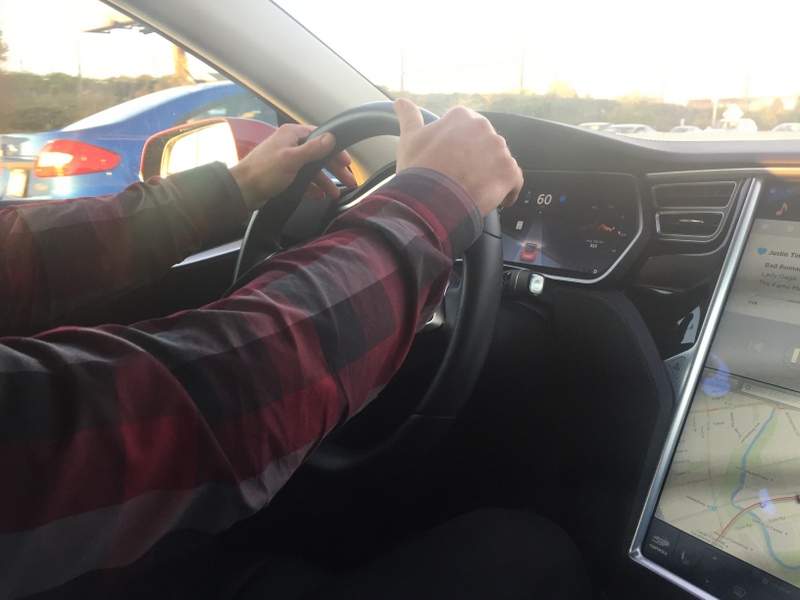
If you like to get low, it may look like this.
Or this.
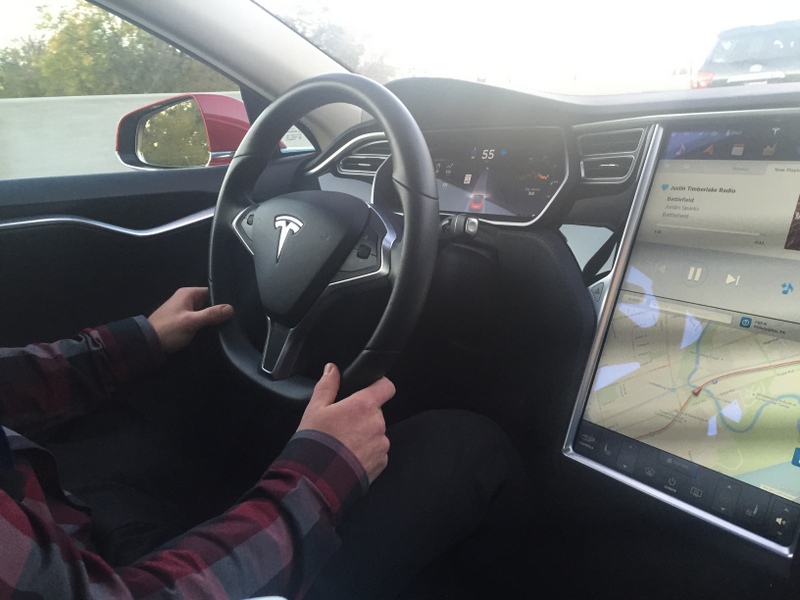
Just don’t get lazy and do this for too long, the car will warn you both audibly and with a screen message to put your hands back on the wheel.

Lifestyle
Elon Musk seemingly confirms Cybertruck gift to 13-year-old cancer fighter
Diagnosed in 2018 with a rare form of brain and spine cancer with no cure, the teen has undergone 13 surgeries by the time he was 12.
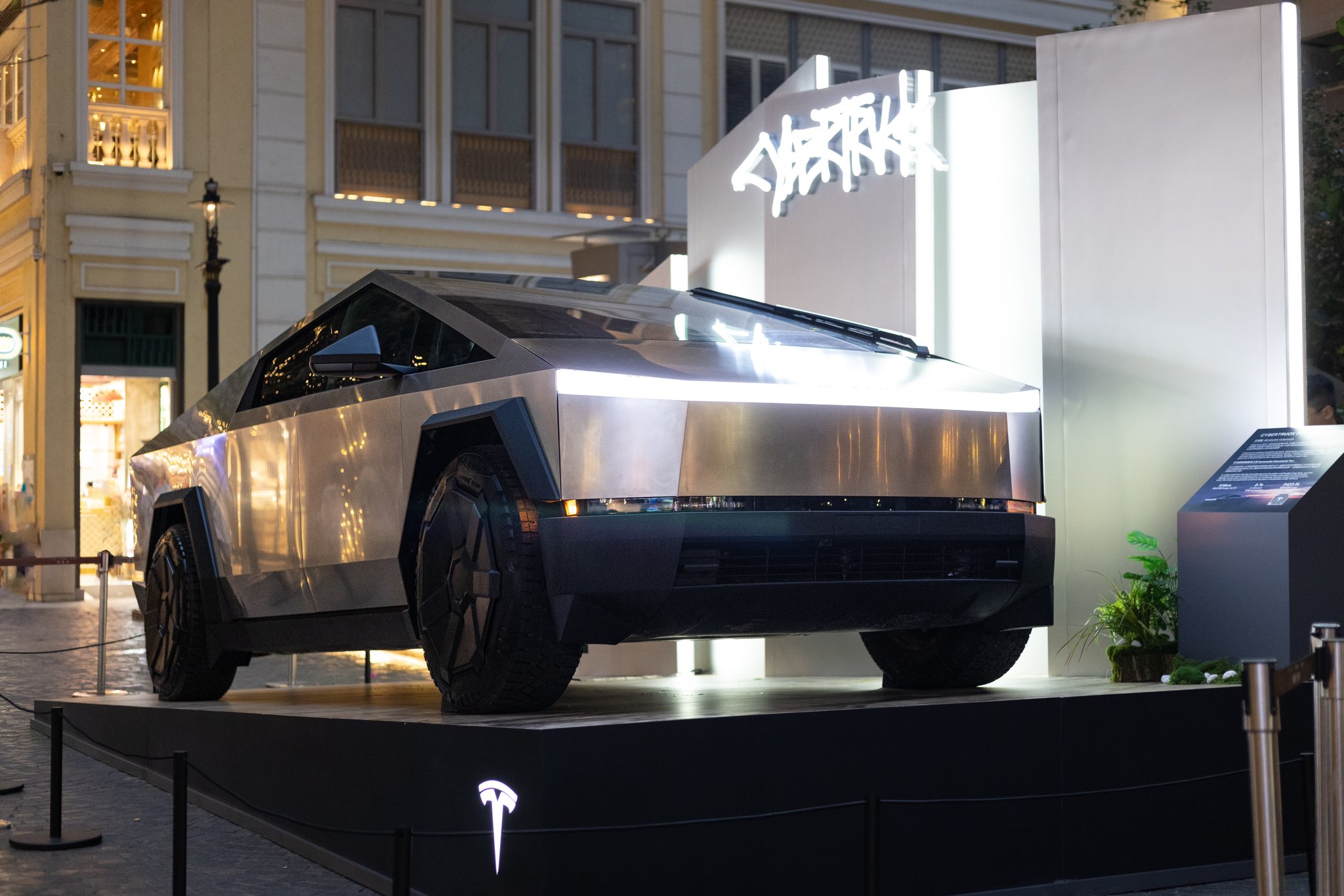
Elon Musk has seemingly confirmed that he will be sending a Tesla Cybertruck to 13-year-old Devarjaye “DJ” Daniel, a 13-year-old Houston boy fighting brain cancer. The teen was recognized as an honorary Secret Service member by U.S. President Donald Trump during his address to Congress on Tuesday.
A Chance Meeting
The Tesla CEO’s Cybertruck pledge was mentioned during DJ’s short interview with CNN’s Kaitlan Collins. When Collins asked the 13-year-old what he told the Tesla CEO, DJ answered that he asked for a Cybertruck.
“I said, ‘can you do me a big favor, when you get back to Houston can you send us a Cybertruck down there?’” the cancer fighter stated.
Daniel noted that Musk responded positively to his request, which was highlighted by Collins in a post on X. Musk responded to the post with a heart emoji, suggesting that he really will be sending a Cybertruck to the 13-year-old cancer fighter.
Teen’s Cancer Battle Inspires
Diagnosed in 2018 with a rare form of brain and spine cancer with no cure, Daniel has undergone 13 surgeries by the time he was 12. During his speech, Trump highlighted the 13-year-old’s long battle with his disease.
“Joining us in the gallery tonight is a young man who truly loves our police. The doctors gave him five months at most to live. That was more than six years ago. Since that time, DJ and his dad have been on a quest to make his dream come true,” Trump stated.
Daniels officially received an honorary badge from U.S. Secret Service Director Sean Curran, to much applause during the event.
Surprisingly Partisan
While Daniels’ story has been inspiring, Trump’s focus on the 13-year-old cancer fighter has received its own fair share of criticism. MSNBC host Nicolle Wallace, while referencing Daniels’ love for law enforcement, noted that she is hoping the 13-year-old never has to defend the U.S. capitol against Trump supporters. “If he does, I hope he isn’t one of the six who loses his life to suicide,” Wallace stated.
Anti-Musk and Trump accounts on X have also thrown jokes at the cancer fighter’s honorary badge, with some dubbing the 13-year-old as a “DEI hire” that should be looked into by DOGE.
Lifestyle
Tesla owner highlights underrated benefit of FSD Supervised
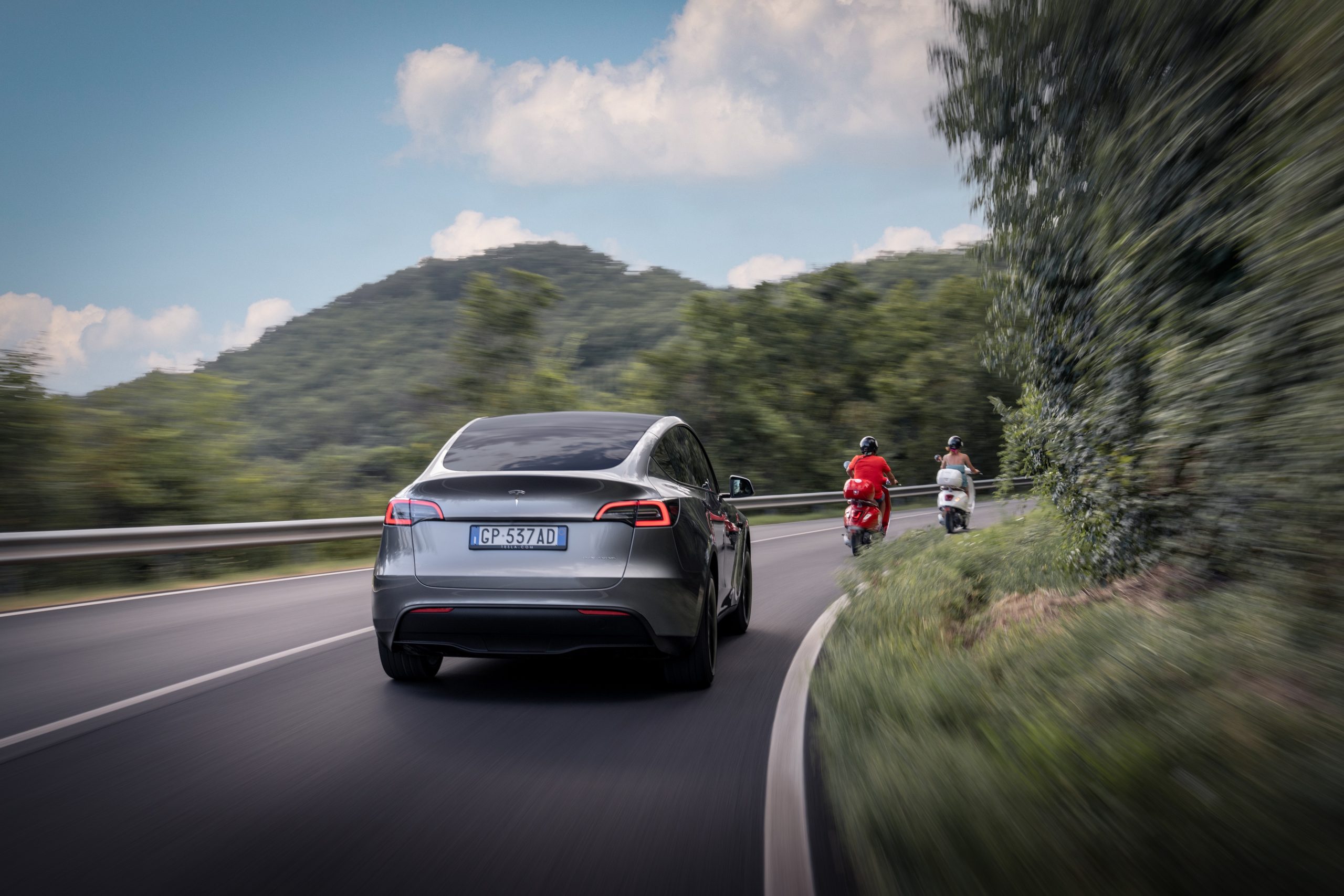
Elon Musk has been pretty open about the idea of FSD being the difference maker for Tesla’s future.
If Tesla succeeds in achieving FSD, it could become the world’s most valuable company. If it doesn’t, then the company would not be able to reach its optimum potential.
FSD Supervised’s safety benefits:
- But even if FSD is still not perfect today, FSD Supervised is already making a difference on the roads today.
- This was highlighted in Tesla’s Q4 2024 Vehicle Safety Report.
- As per Tesla, it recorded one crash for every 5.94 million miles driven in which drivers were using Autopilot technology.
- For comparison, the most recent data available from the NHTSA and FHWA (from 2023) showed that there was one automobile crash every 702,000 miles in the United States.
This morning, Tesla FSD proved to be an absolute godsend. I had to take my brother-in-law to the hospital in Sugar Land, TX, which is 40 miles away, at the ungodly hour of 4 AM. Both of us were exhausted, and he was understandably anxious about the surgery.
— JC Christopher (@JohnChr08117285) January 29, 2025
The convenience of…
FSD user’s tale:
- As per an FSD user’s post on social media platform X, FSD Supervised was able to help him drive a relative to a medical facility safely even if he was exhausted.
- During the trip, the driver only had to monitor FSD Supervised’s performance to make sure the Tesla operated safely.
- In a vehicle without FSD, such a trip with an exhausted driver would have been quite dangerous.
- “This morning, Tesla FSD proved to be an absolute godsend. I had to take my brother-in-law to the hospital in Sugar Land, TX, which is 40 miles away, at the ungodly hour of 4 AM. Both of us were exhausted, and he was understandably anxious about the surgery.
- “The convenience of sending the hospital’s address directly from my iPhone to my Tesla while still inside my house, then just a single button press once inside, and 40 miles later we were precisely in front of the hospital’s admissions area.This experience really underscores just how transformative this technology can be for society,” Tesla owner JC Christopher noted in his post.
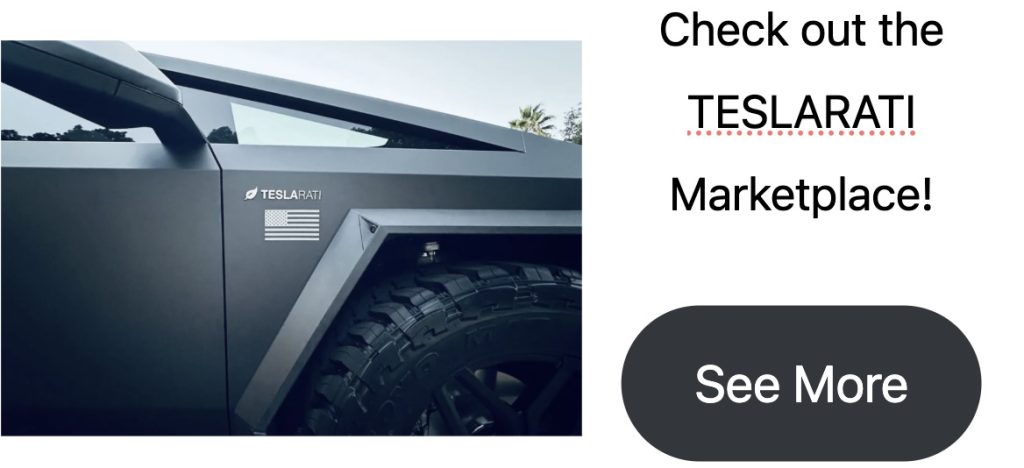

Don’t hesitate to contact us with news tips. Just send a message to simon@teslarati.com to give us a heads up.
Lifestyle
Tesla Optimus “stars” in incredible fanmade action short film
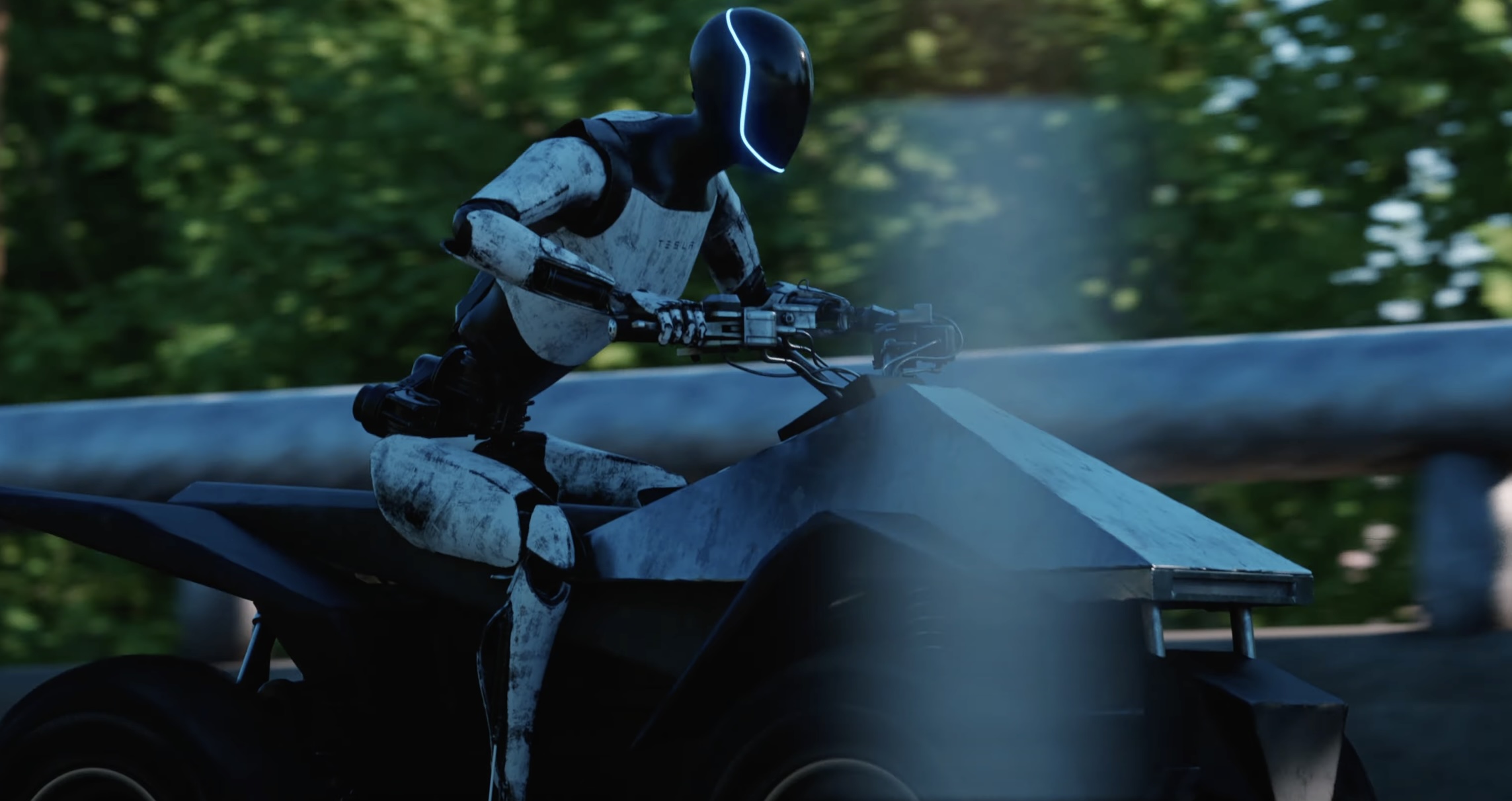
There are few things that prove an enthusiast’s love towards a company more than a dedicated short film. This was highlighted recently when YouTube’s SoKrispyMedia posted a 10-minute action movie starring Optimus, Tesla’s humanoid robot, as well as several of the company’s most iconic products.
The video:
- Shot like a Hollywood action flick, the video featured a rather humorous plot involving a group of thieves that mistakenly targeted a Tesla Model 3 driver.
- The Model 3 driver then ended up speaking to Tesla for assistance, and some high-octane and high-speed hijinks ensued.
- While the short film featured several Tesla products like the Model 3, Superchargers, and the Cybertruck, it is Optimus that truly stole the show.
- Optimus served several roles in the short film, from an assistant in a Tesla office to a “robocop” enforcer that helped out the Model 3 driver.
Future Robo-cop @Tesla_Optimus
— SOKRISPYMEDIA (@sokrispymedia) January 12, 2025
full video: https://t.co/TXpSRhcP5K pic.twitter.com/YFHZ7siAP7
Cool inside jokes:
- The best Tesla videos are those that show an in-depth knowledge of the company, and SoKrispyMedia definitely had it.
- From the opening scenes alone, the video immediately poked fun at TSLA traders, the large number of gray Tesla owners, and the fact that many still do not understand Superchargers.
- The video even poked fun at Tesla’s software updates, as well as how some Tesla drivers use Autopilot or other features without reading the fine print in the company’s release notes.
- The video ended with a tour de force of references to Elon Musk products, from the Tesla Cybertruck to the Boring Company Not-a-Flamethrower, which was released back in 2018.
Check out SoKrispyMedia’s Tesla action short film in the video below.
Don’t hesitate to contact us with news tips. Just send a message to simon@teslarati.com to give us a heads up.
-

 News2 weeks ago
News2 weeks agoTesla aiming to produce first “legion” of Optimus robots this 2025
-

 Elon Musk1 week ago
Elon Musk1 week agoTesla CEO Elon Musk’s simple message to vandals
-
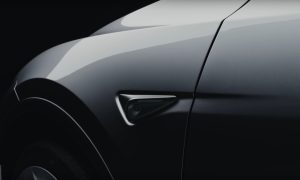
 Elon Musk2 weeks ago
Elon Musk2 weeks agoElon Musk confirms two measures Tesla is taking to fight vandalism
-
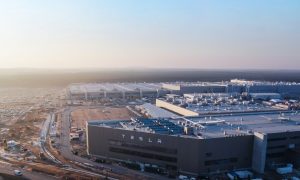
 News1 week ago
News1 week agoTesla’s Giga Berlin director responds to anti-Musk criticism
-
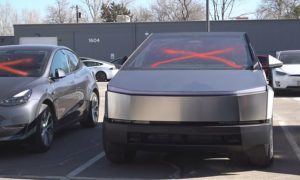
 Elon Musk2 weeks ago
Elon Musk2 weeks agoTesla owners doxxed by controversial anti-DOGE website in clear intimidation tactic
-

 Elon Musk2 weeks ago
Elon Musk2 weeks agoElon Musk to file lawsuit against former US Rep Jamaal Bowman: “I’ve had enough”
-
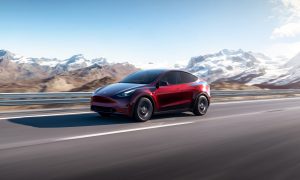
 News1 week ago
News1 week agoTesla Model Y inventory is going fast, selling out in many U.S. states
-
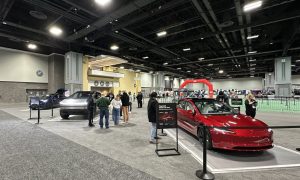
 Elon Musk2 weeks ago
Elon Musk2 weeks agoTesla kicked from popular auto show as event succumbs to protest pressure
